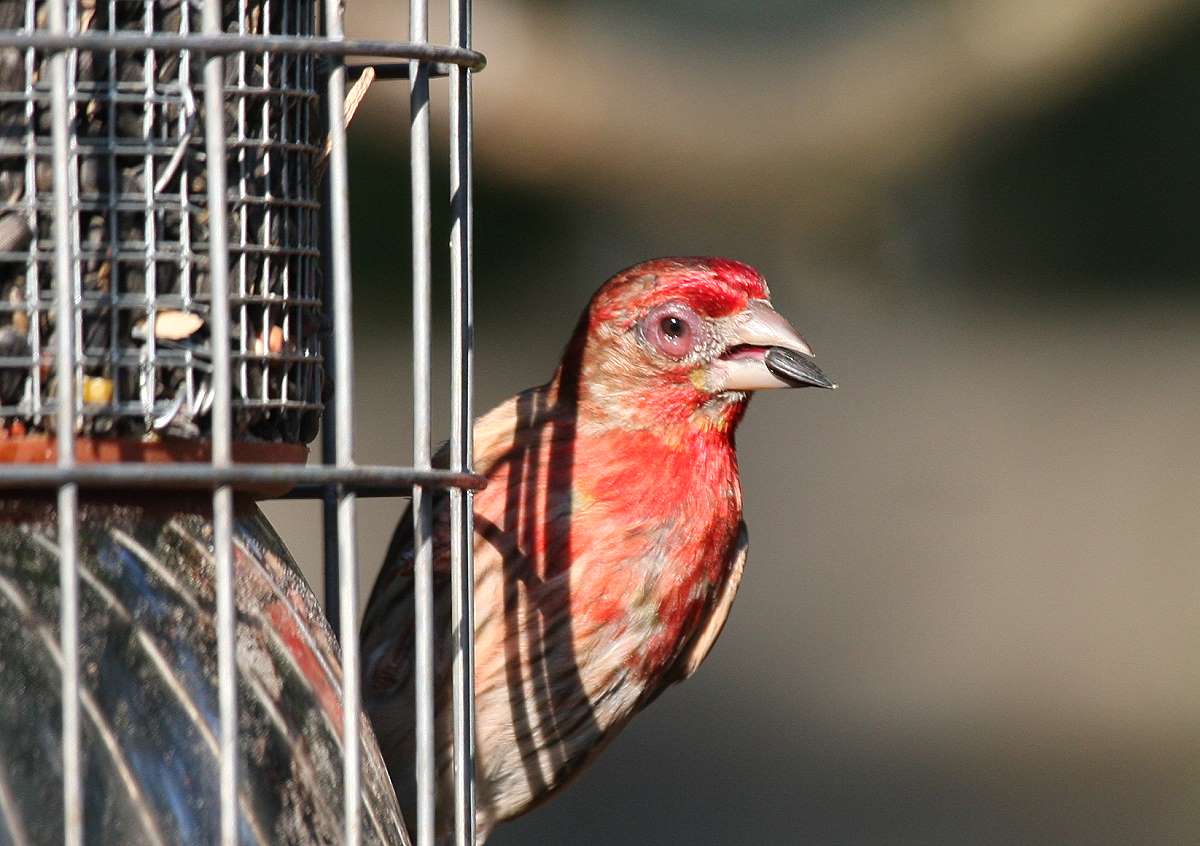 House finch eye disease, which was first struck in the 1990s, unexpectedly became more virulent over time, says a paper published this week by PLoS Biology. It was a less virulent strain, however, that spread west across the country. But once it became established in California, it became more virulent.
House finch eye disease, which was first struck in the 1990s, unexpectedly became more virulent over time, says a paper published this week by PLoS Biology. It was a less virulent strain, however, that spread west across the country. But once it became established in California, it became more virulent.
“For the disease to disperse westward, a sick bird has to fly a little farther, and survive for longer, to pass on the infection. That will select for strains that make the birds less sick,” said Dana Hawley of Virginia Tech, the lead author of the study in a Cornell Lab of Ornithology press release.
By 1998 the House Finch population in the eastern United States had dropped by half—a loss of an estimated 40 million birds, the release says. The disease does not kill birds directly, but it makes them easy targets for predators.
Read the Cornell press release here.
Read the PLoS biology paper here.
Photo: Male house finch with eye disease, by David Smith. Used courtesy Cornell Lab of Ornithology.
